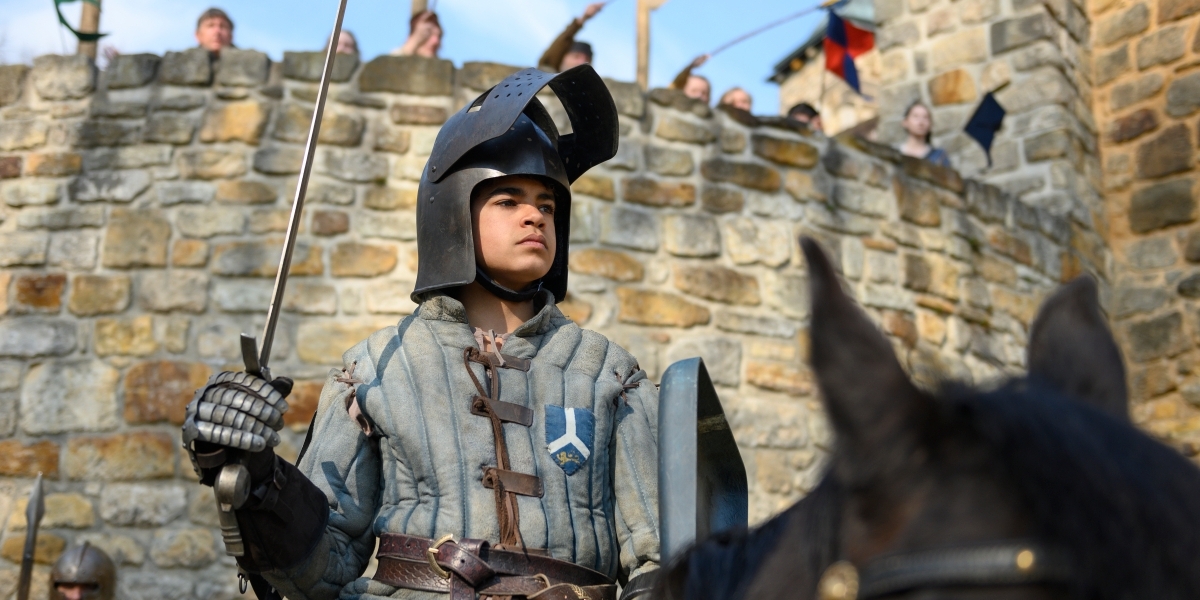Netflix’s ‘The Letter for the King’ follows the story of a boy named Tiuri who inadvertently takes on the quest of delivering an important letter to the king, the letter that holds the fate of the entire kingdom in itself. The journey takes him through distant lands, and he makes many friends while fighting more enemies along the way. Even though it is set in a different era, Tiuri’s story feels real due to his personal struggles and challenges. Hence, even though it is a fantasy drama, one wonders how much it draws from true events. Here is the answer.
The Letter for the King: A Story Rooted in Imagination
No, ‘The Letter for the King’ is not based on a true story. It is, in fact, based on the book of the same name by Tonke Dragt. Originally published in Dutch in 1962, the book is a classic in the Netherlands. It is the kind of book that every child in the country reads growing up, which is another testament to its popularity. It has received many awards, and in 1965, a sequel titled ‘The Secrets of the Wild Wood’ was also released.
It was also given the status of the best Dutch YA book of the past half-century. Over the years, it has been translated into Japanese, Polish, Spanish, and French, among others. Despite this huge popularity, it took a lot of time for it to find a market in the English language. It was only in 2013 that it was translated to English, from where it eventually found its way to thousands of more readers, as well as, Netflix.
The Inspiration Behind The Letter for the King
When most of the Dutch writers were busy grounding their stories in reality, Tonke Dragt would lose herself in the imaginary worlds of her own making. The books in her country, even the ones for children, lacked the fantasy element that she found in abundance in English literature. She believed that no matter what the situation, a good story could provide you with an escape like nothing else, which is why she spent most of her time on the fantasy genre or science fiction.
One could infer her need to escape from reality on her experiences as a child. Born in Batavia of the Dutch East Indies (now Jakarta, Indonesia), Dragt read up on a lot of Jules Verne. During the Second World War, Japan invaded the country, and she found herself, along with her two sisters and mother, in a prisoner’s camp. With nowhere to go and a lot of time on her hands but nothing to read, she decided to concoct stories of her own. Along with her friend, she imagined far and distant worlds, which they would pen down on scraps or toilet paper. This is where she got the element of fantasy, and even though none of those stories ever found the light of day, Dragt stuck with that form of storytelling.
Consequently, most of her stories are generally focused on the protagonists who go about on a quest that leads them on the path of self-discovery. The reason for picking male characters as the central focus of her stories was because she believed that it was more logical. Because the story would be set in the Middle Ages, women had smaller roles to play. However, that did change when, in the sequel of ‘The Letter for the King’, she shifted more focus to Lavinia, who is a very minor character in the first book. The Netflix series, on the other hand, takes a completely different approach.
For the teenage characters, she drew inspiration from her own time in Batavia and the summer holidays she spent in Puncak and Situgunung. The rainforests and majestic mountains in her stories are reminiscent of her time in her childhood home. There is also an undeniable influence of English literature, as many comparisons can be drawn between her worlds and the ones that we come across in popular fantasy series like the Lord of the Rings or in the Arthurian legends like the Knights of the Roundtable.
Read More: 30 Best Fantasy Movies Ever Made

